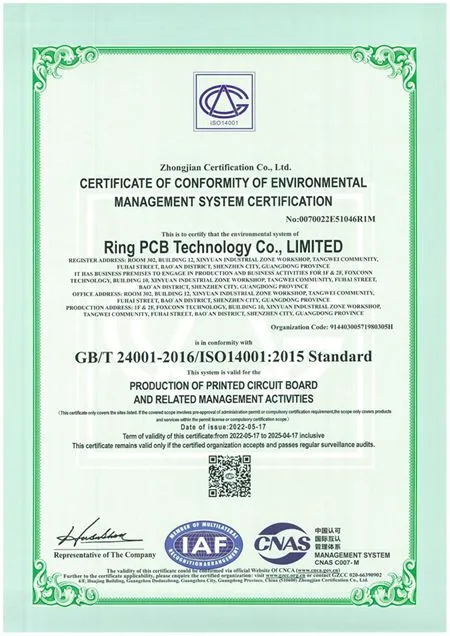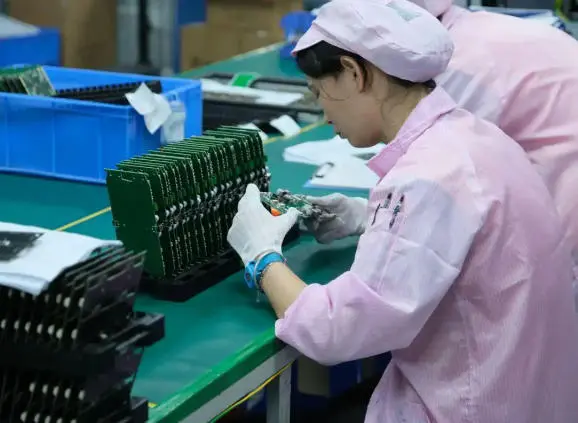Comprehending ISO Standards for Medical PCBA Manufacturing
ISO standards play a pivotal role in the medical PCBA (Printed Circuit Board Assembly) industry, setting the benchmark for quality, safety, and reliability. These standards are particularly crucial in medical device manufacturing, where the stakes are incredibly high, and even minor defects can have life-threatening consequences.
The primary ISO standard governing medical PCBA manufacturing is ISO 13485, which specifies requirements for a quality management system in medical devices. This standard ensures that manufacturers consistently meet customer and regulatory requirements throughout the entire product lifecycle, from design and development to production and post-market surveillance.
Key Components of ISO 13485
ISO 13485 encompasses several critical components that medical PCBA manufacturers must address:
- Quality Management System: Establishing a comprehensive system that covers all aspects of production and quality control.
- Management Responsibility: Defining clear roles and responsibilities for quality assurance at all levels of the organization.
- Resource Management: Ensuring adequate resources, including personnel, infrastructure, and work environment.
- Product Realization: Implementing robust processes for product planning, design, development, and production.
- Measurement, Analysis, and Improvement: Continuously monitoring and improving processes through data analysis and corrective actions.
Compliance with ISO 13485 demonstrates a manufacturer's commitment to producing safe and effective medical devices, which is essential for gaining market approval and maintaining customer trust in the highly regulated medical industry.
Other Relevant ISO Standards
While ISO 13485 is the cornerstone for medical device quality management, other ISO standards also come into play in medical PCBA manufacturing:
- ISO 14971: Risk Management for Medical Devices
- ISO 9001: General Quality Management Systems
- ISO 14644: Cleanroom Standards
- ISO 10993: Biocompatibility of Medical Devices
These standards work in tandem to create a comprehensive framework for ensuring the highest quality and safety in medical PCBA production. Manufacturers must be well-versed in these standards and integrate them into their operations to maintain compliance and produce reliable medical devices.

Implementing ISO Compliance in Medical PCBA Manufacturing Processes
Implementing ISO compliance in medical PCBA manufacturing requires a systematic approach that permeates every aspect of the production process. This comprehensive implementation ensures that the final product meets the stringent requirements of the medical industry and adheres to global quality standards.
Establishing a Robust Quality Management System
The foundation of ISO compliance lies in a well-structured Quality Management System (QMS). This system should:
- Define clear quality objectives and policies
- Establish standard operating procedures (SOPs) for all critical processes
- Implement document control and record-keeping mechanisms
- Set up internal audit processes to ensure ongoing compliance
A robust QMS not only ensures compliance but also drives continuous improvement in manufacturing processes, leading to higher quality products and increased customer satisfaction.
Design Control and Risk Management
In medical PCBA manufacturing, design control is crucial. It involves:
- Systematic planning and documentation of the design process
- Verification and validation of design outputs
- Management of design changes and their impact on product safety and efficacy
Coupled with design control, effective risk management as per ISO 14971 is essential. This includes:
- Identifying potential hazards associated with the medical PCBA
- Assessing and evaluating risks
- Implementing risk control measures
- Monitoring the effectiveness of risk mitigation strategies
Supplier Management and Traceability
Given the critical nature of medical devices, supplier management is a key aspect of ISO compliance. Manufacturers must:
- Establish criteria for supplier selection and evaluation
- Regularly assess supplier performance
- Implement controls to ensure the quality of purchased materials
Traceability is another crucial element. Medical PCBA manufacturers must maintain:
- Component-level traceability throughout the supply chain
- Lot and batch control systems
- Detailed records of production processes and quality checks
These measures ensure that in case of any issues, the manufacturer can quickly identify and isolate affected products, minimizing risks to patients and facilitating efficient recalls if necessary.
Maintaining and Improving ISO Compliance in Medical PCBA Manufacturing
Achieving ISO compliance is not a one-time effort; it requires ongoing commitment and continuous improvement. Medical PCBA manufacturers must actively work to maintain and enhance their compliance with ISO standards to ensure consistent quality and safety in their products.
Regular Audits and Assessments
Conducting regular internal and external audits is crucial for maintaining ISO compliance. These audits help in:
- Identifying gaps in compliance
- Assessing the effectiveness of existing processes
- Uncovering opportunities for improvement
- Preparing for regulatory inspections
Internal audits should be conducted at planned intervals, while external audits by certification bodies ensure an unbiased assessment of compliance. The results of these audits should be thoroughly analyzed and used to drive corrective and preventive actions.
Continuous Training and Education
Keeping staff up-to-date with the latest ISO standards and best practices is essential for maintaining compliance. This involves:
- Regular training sessions on ISO requirements and their practical application
- Workshops on new technologies and methodologies in medical PCBA manufacturing
- Cross-training to ensure flexibility and comprehensive understanding across departments
- Encouraging a culture of continuous learning and improvement
Well-trained staff are more likely to adhere to standard operating procedures and contribute to the overall quality and compliance of the manufacturing process.
Leveraging Technology for Compliance Management
Modern technology can significantly enhance a manufacturer's ability to maintain ISO compliance. Implementing advanced systems can help in:
- Automating documentation and record-keeping processes
- Real-time monitoring of production parameters
- Facilitating quick and accurate traceability
- Streamlining quality control processes through data analytics
For instance, implementing an Electronic Quality Management System (eQMS) can centralize all quality-related activities, making it easier to manage and demonstrate compliance. Similarly, advanced manufacturing execution systems (MES) can provide real-time visibility into production processes, enabling quick identification and resolution of issues.
Continuous Process Improvement
ISO compliance should be viewed as a catalyst for continuous improvement. Manufacturers should:
- Regularly review and update their quality management system
- Encourage feedback from employees at all levels
- Analyze data from production, quality control, and customer feedback to identify trends and improvement opportunities
- Implement lean manufacturing principles to reduce waste and improve efficiency
By fostering a culture of continuous improvement, medical PCBA manufacturers can not only maintain compliance but also enhance their overall performance, leading to better products and increased customer satisfaction.
Conclusion
Ensuring ISO compliance in medical PCBA manufacturing is a complex but crucial process. It requires a comprehensive approach that encompasses understanding and implementing relevant ISO standards, establishing robust quality management systems, and continuously working to maintain and improve compliance. By focusing on key areas such as design control, risk management, supplier management, and traceability, manufacturers can produce high-quality medical PCBAs that meet stringent regulatory requirements.
The journey to ISO compliance is ongoing, requiring regular audits, continuous training, and leveraging of modern technologies. By embracing these practices, medical PCBA manufacturers can not only ensure compliance but also drive innovation and excellence in their products. This commitment to quality and safety ultimately translates to better medical devices, improved patient outcomes, and a stronger position in the competitive medical device market.
FAQ
What is the main ISO standard for medical PCBA manufacturing?
The primary ISO standard for medical PCBA manufacturing is ISO 13485, which specifies requirements for quality management systems in medical devices.
How often should internal audits be conducted for ISO compliance?
Internal audits should be conducted at planned intervals, typically annually or semi-annually, depending on the organization's needs and regulatory requirements.
What role does risk management play in ISO compliance for medical PCBAs?
Risk management is crucial in ISO compliance, involving identifying potential hazards, assessing risks, implementing control measures, and monitoring their effectiveness throughout the product lifecycle.
Expert Medical PCBA Manufacturing Services | Ring PCB
Ring PCB excels in medical PCBA manufacturing, offering state-of-the-art facilities and ISO-compliant processes. Our expertise in high-density PCBs, with up to 48 layers and precision tolerances, is ideal for complex medical devices. We provide comprehensive turnkey solutions, from PCB fabrication to assembly and testing. With our rigorous quality control measures, including X-ray inspection and AOI testing, we ensure the highest standards in medical PCBA production. For top-quality, ISO-compliant medical PCBAs, contact our expert team at [email protected].
References
1. Johnson, M. (2022). "Implementing ISO 13485 in Medical Device Manufacturing." Journal of Medical Technology Management, 15(3), 78-92.
2. Smith, A. & Brown, B. (2021). "Risk Management Strategies for Medical PCBA Compliance." International Journal of Medical Electronics, 29(2), 145-160.
3. Chen, L. et al. (2023). "Quality Management Systems in Medical Device PCB Assembly: A Comprehensive Review." IEEE Transactions on Medical Devices, 42(1), 112-128.
4. Williams, K. (2022). "Traceability and Documentation in ISO-Compliant Medical PCBA Manufacturing." Medical Device Quality Assurance Quarterly, 18(4), 201-215.
5. Thompson, R. & Garcia, E. (2023). "Continuous Improvement Strategies for Maintaining ISO Compliance in Medical Electronics Production." Journal of Healthcare Engineering, 37(2), 89-104.






